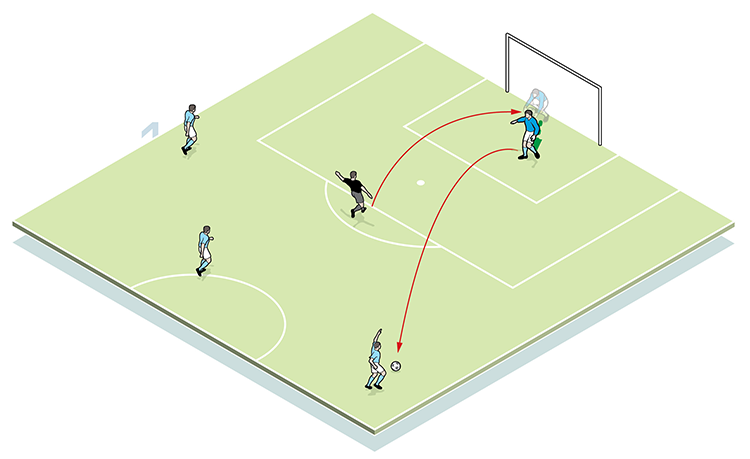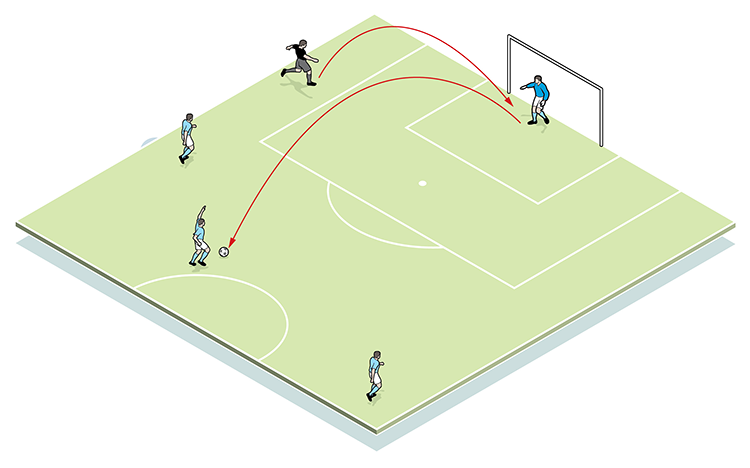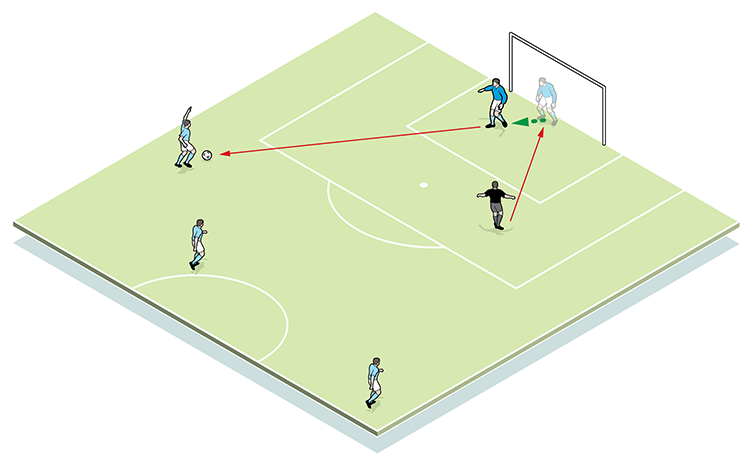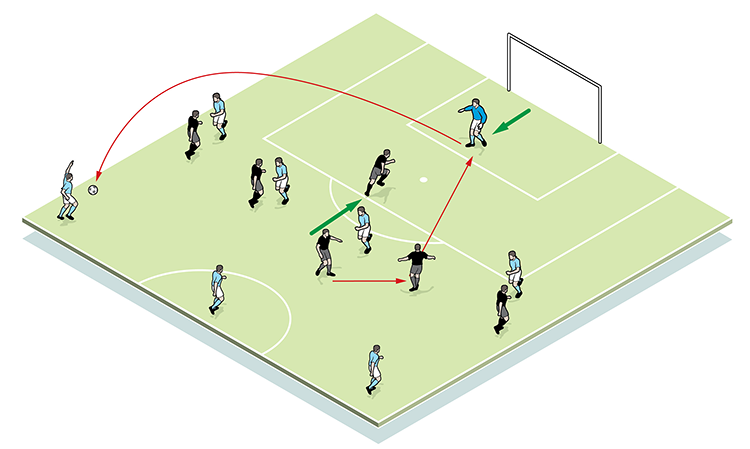




OUR BEST EVER OFFER - SAVE £100/$100
JOIN THE WORLD'S LEADING PROFESSIONAL DEVELOPMENT PROGRAMME
- 12 months membership of Elite Soccer
- Print copy of Elite Player & Coach Development
- Print copy of The Training Ground
Direct distribution
Distribution from goalkeepers - using both feet - is now a vital part of the game. This session helps distribution to real targets become second nature, and prevents keepers kicking aimlessly.
| Area | Half pitch |
| Equipment | Cones, balls |
| No. of Players | 1 goalkeeper, 1 defender, 3 targets |
I like to use this session because distribution from goalkeepers - using both feet - is now a vital part of the game. The latest statistics show that goalkeepers at the highest level use their feet five times as often as their hands when in control of the ball. Distribution has always been crucial for a keeper, and with the way the game is developing, they are increasingly being seen as an outfield player or quarterback in terms of their ability to start forward moves.
Goalkeepers are tested on the accuracy and value of their distribution every time they release the ball in a match. This session helps distribution to real targets become second nature, and prevents them kicking aimlessly.
What do I get the players to do?
Position three targets near to the halfway line. Use a striker in various places around the penalty box to fire balls at the goalkeeper, varying the type and intensity of each shot. The goalkeeper must then deliver the ball accurately to each target. Vary between first-time passes and allowing the keeper to take a touch. The primary intention is that he uses his feet, not his hands. If you don’t have players as targets, used coned areas for the keeper to aim at (1a/1b/1c).
1a

1b

1c

What are the key things to look out for technically/tactically?
We’re looking for passing accuracy over varied distances, and the use of both feet in doing so, plus the fundamental skills of receiving and controlling the ball in the first place. The session is demanding but good fun, and keepers will see marked improvements if they keep practicing.
How do I progress the session?
Bringing in more players helps goalkeepers visualise the drill more clearly, and helps them better define specific areas.
Another way to progress is to play six attackers against the back four. Get those defenders to hold a high line while the attackers play balls in behind them and chase. Look for the keeper to know how to react to the situation, knowing that in this session he can only use his feet, not his hands (2a/2b/2c).
And we wouldn’t be afraid to have a competition between goalkeepers, with forfeits for losers (e.g. press-ups, sprints).
2a

2b

2c

Related Files
Editor's Picks
Attacking transitions
Deep runs in the final third
Using the goalkeeper in build-up play
Intensive boxes drill with goals
Penetrating the final third
Creating and finishing
My philosophy
Pressing initiation
Compact team movement
Coaches' Testimonials

Alan Pardew

Arsène Wenger

Brendan Rodgers

Carlos Carvalhal

José Mourinho

Jürgen Klopp

Pep Guardiola

Roy Hodgson

Sir Alex Ferguson

Steven Gerrard
Coaches' Testimonials

Gerald Kearney, Downtown Las Vegas Soccer Club

Paul Butler, Florida, USA

Rick Shields, Springboro, USA

Tony Green, Pierrefonds Titans, Quebec, Canada
Join the world's leading coaches and managers and discover for yourself one of the best kept secrets in coaching. No other training tool on the planet is written or read by the calibre of names you’ll find in Elite Soccer.
In a recent survey 92% of subscribers said Elite Soccer makes them more confident, 89% said it makes them a more effective coach and 91% said it makes them more inspired.
Get Monthly Inspiration
All the latest techniques and approaches
Since 2010 Elite Soccer has given subscribers exclusive insight into the training ground practices of the world’s best coaches. Published in partnership with the League Managers Association we have unparalleled access to the leading lights in the English leagues, as well as a host of international managers.
Elite Soccer exclusively features sessions written by the coaches themselves. There are no observed sessions and no sessions “in the style of”, just first-hand advice delivered direct to you from the coach.







